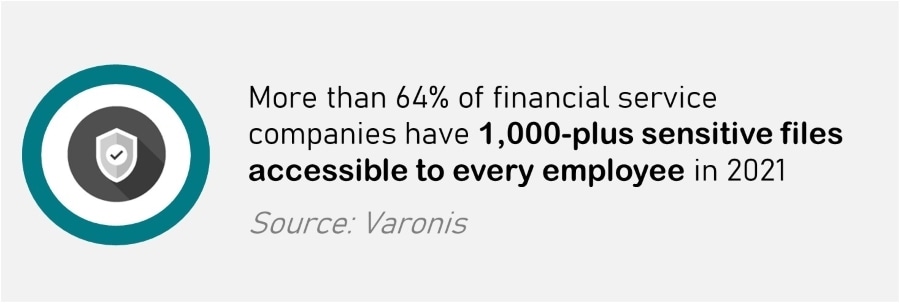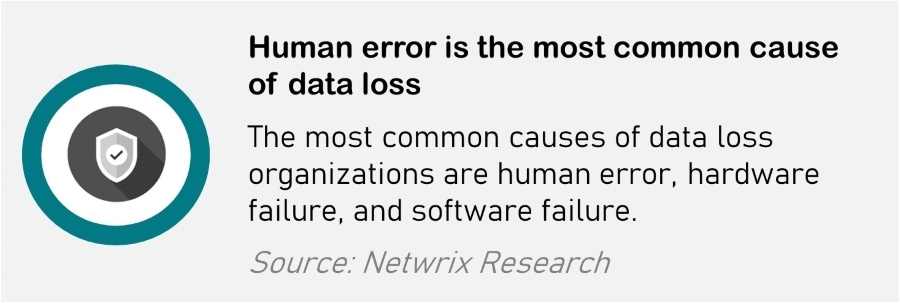Choosing a Data Loss Prevention (DLP) Solution

Data Loss Prevention (DLP) solutions are an essential part of the data loss prevention process to identify the different data types. Data loss prevention (DLP) solutions can serve many functions, such as monitoring channels and endpoints through which data flows. Moreover, it can scan data repositories, such as servers and file shares and analyze the content.
If you want to implement effective DLP best practices, the strategy must include written procedures and policies for storing and handling sensitive data and detailed guidelines for security violations. However, this can be a daunting task.
Here, we discuss choosing a data loss prevention (DLP) solution for your organization and some best practices when implementing DLP.
What is a Data Loss Prevention Solution?
A Data Loss Prevention (DLP) solution is a suite of products that monitors, identifies and protects the critical data of your business when it is in use, at rest, and in motion.
- Data in Use: Securing data by authenticating users and controlling access to sensitive data while it is being actively processed in applications or at endpoints
- Data at Rest: Protecting stored data through access control, encryption and data retention policies while it is in the cloud, databases or other storage mediums, such as backup tapes and endpoint devices
- Data in Motion: Ensuring data is encrypted while it is transmitted across a network, using email and messaging security tools
It accomplishes this by using various technologies like exact data matching, fingerprinting, and classification. Moreover, a comprehensive DLP solution will also include policy creation and centralized management.
Some data loss prevention solutions require massive effort and maintenance costs. So, it would help if you chose the solution according to your organization’s data protection needs. When you evaluate available options, you need to consider some essential factors.

Type of Data You Want to Protect
The first critical step is to identify what type of data you have and what type of protection is required? Moreover, you need to understand where the data resides and who is using it? If you’re not sure where the data is and where it goes, don’t worry, the DLP solution can discover and classify data across your network.
Moreover, it provides visibility of where your data goes and who uses it. All these things can help you identify which level of data protection you need, and you can identify the gaps in your existing processes.
Where Do You Need Protections?
Data can leave your organization differently, so you need to understand which protocol the DLP solution can use to analyze and act against it.
Does it have the capability to control USB ports so that sensitive data can’t be downloaded to an external device? Can it specify which applications users can and can’t use on a specific device?
Moreover, a comprehensive DLP solution must enforce policies for data leaving the network using different protocols, such as instant messaging, email, blogs, webmail, wikis, cloud services, FTP, etc.
How Do Data Loss Prevention (DLP) Solutions Work?
After creating a DLP policy on paper, you can configure the required policies in your DLP system. Usually, the DLP system has a set of rules, and the program needs to follow them strictly.
Each rule has some priority, and the program has to process them in the same order. Some DLP solutions contain machine learning technologies to improve regulations.
For example, a process might process in the following way:
- A rule identifies an event (when a user attempts to share sensitive information through instant messenger).
- The solution blocks the message from sending.
- The solution generates a report containing all the event information, including user involvement and specified email addresses.
Detection Techniques
The primary function of a DLP system is to detect confidential data in a data stream. Different DLP systems use other methods, such as:
- Creating fingerprints of protected information
- Applying tags to information
- Looking for specific keywords to differentiate sensitive documents such as financial statements and contracts
- Text analysis
During the complete process, accuracy is critical. When the system fails to detect sensitive information, it can result in undetected leaks. So, it would help if you chose a solution that can store and protect the data with accuracy.
Next Steps: Implementing your DLP Solution
The most effective DLP practices integrate technology, process controls, knowledgeable personnel, and employee awareness. The following guidelines are recommended for developing an effective DLP programme:
Scope your DLP initiative
Numerous organizations use inconsistent and ad-hoc DLP practices and technologies, which various departments and business units implement. This inconsistency results in a lack of visibility into data assets and insecure data.
Define your data loss prevention program’s objective clearly, whether to protect intellectual property, improve visibility and control of your data, or comply with regulatory requirements. Having a clear purpose will assist you in determining which type of data loss prevention solution to include in your strategy — network, endpoint, or cloud DLP.
Additionally, employees frequently disregard departmental DLP programmes that the rest of the organization does not support.
Establish an implementation team
To develop and implement a DLP strategy, organizations require personnel with expertise. Certain government regulations require organizations to hire internal data protection staff or retain external data protection consultants.
For example, the GDPR contains provisions that apply to organizations that sell goods or services to or monitor the behaviour of EU residents.
The GDPR requires the establishment of a data protection officer (DPO) or staff capable of performing DPO functions, such as conducting compliance audits, monitoring DLP performance, educating employees about compliance requirements, and acting as a liaison with compliance authorities.

Inventory and assessment
A critical first step in implementing a DLP programme is determining the types of data and their value to the organization.
This entails identifying pertinent data, determining where the data is stored, and determining whether the data is sensitive—intellectual property, confidential information, or data covered by regulations.
RELATED: Top 5 Big Data Privacy Issues Businesses Must Consider
Certain DLP products can rapidly identify information assets by scanning files’ metadata and cataloguing the results or opening the files for content analysis.
The following step is to assess the risk associated with each type of data in the event of a data leak. Data exit points and the likely cost if the data is lost must be considered.
Phased implementation
DLP is a lengthy process that is best carried out in phases. Prioritizing data types and communication channels is the most effective strategy.
Similarly, rather than implementing DLP software components or modules all at once, consider implementing them as needed, based on the organization’s priorities. Risk analysis and data inventory both contribute to the establishment of these priorities.

Establish a classification system
Before developing and implementing DLP policies, an organization must establish a data classification framework or taxonomy for unstructured and structured data.
DLP products can scan data to identify the most critical data categories using a pre-configured taxonomy, which the organization can later customize. While classification is automated and accelerated using DLP software, humans select and customize the categories.
Additionally, content owners can visually evaluate certain types of content if they cannot be identified using simple keywords or phrases.
Institute data handling and remediation policies
Following the framework’s creation, the next step is to create (or update) policies for dealing with various categories of data.
Government regulations specify the DLP policies that must be followed when handling sensitive data. Typically, DLP solutions enforce pre-configured rules or policies following various regulations, such as HIPAA or GDPR.
DLP staff can then tailor the policies to the organization’s specific needs. DLP enforcement products monitor outgoing channels (such as email and webchat) and provide options for resolving potential security breaches.
For example, an employee about to send an email with a sensitive attachment may receive a pop-up suggesting that the message is encrypted, or the system may reject the message entirely or route it to a manager. The organization’s rules determine the response.

Employee Education
DLP requires that employees are aware of and accept security policies and procedures. Preventing data loss is a continuous process, and your employees play a critical role in the programme.
As a result, educating and training your employees about the importance of data security and the consequences of data loss will be critical to the success of your DLP programme.
RELATED: Ten tips to improve Cyber Security Awareness amongst your employees
Employee education and training efforts can increase employees’ awareness of the importance of data security and their ability to adhere to recommended DLP best practices.

